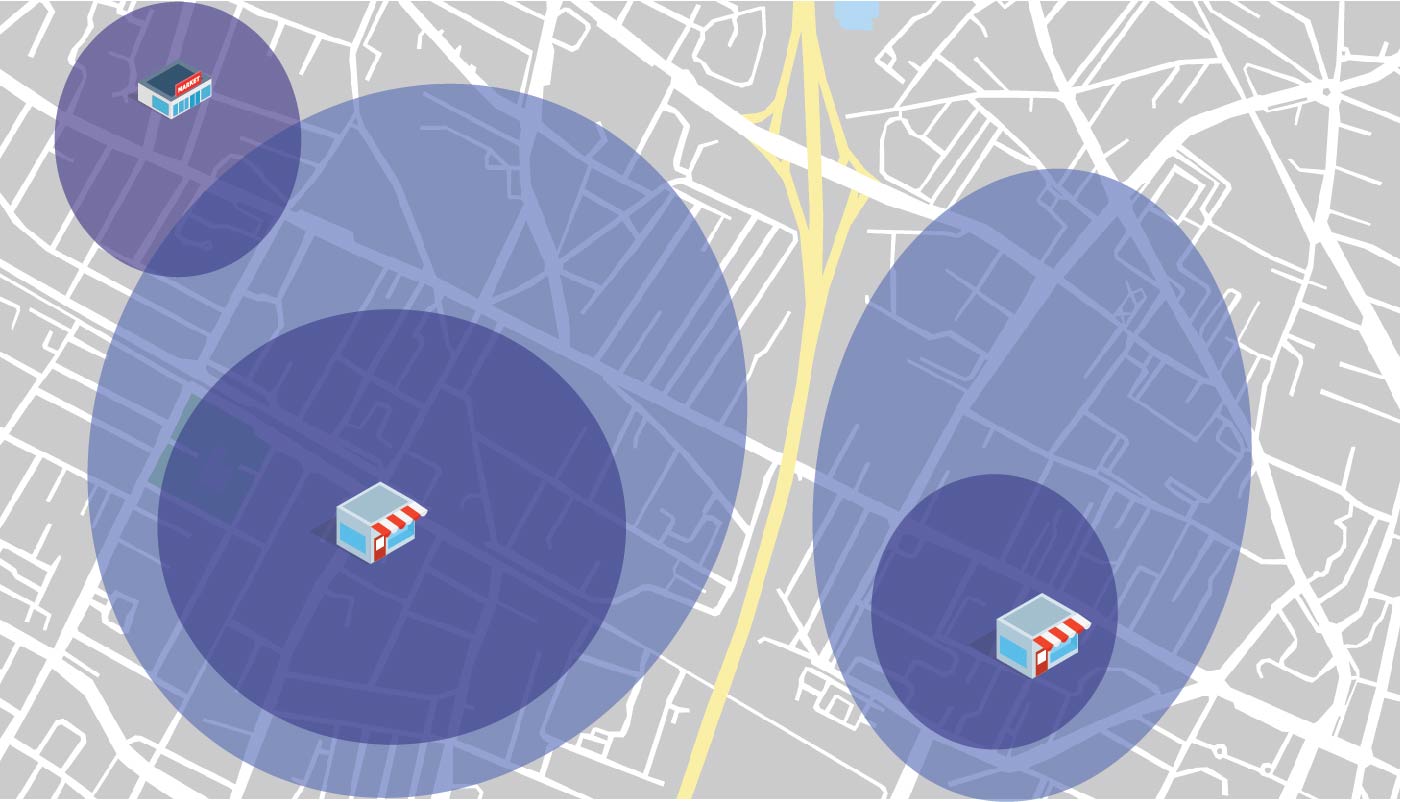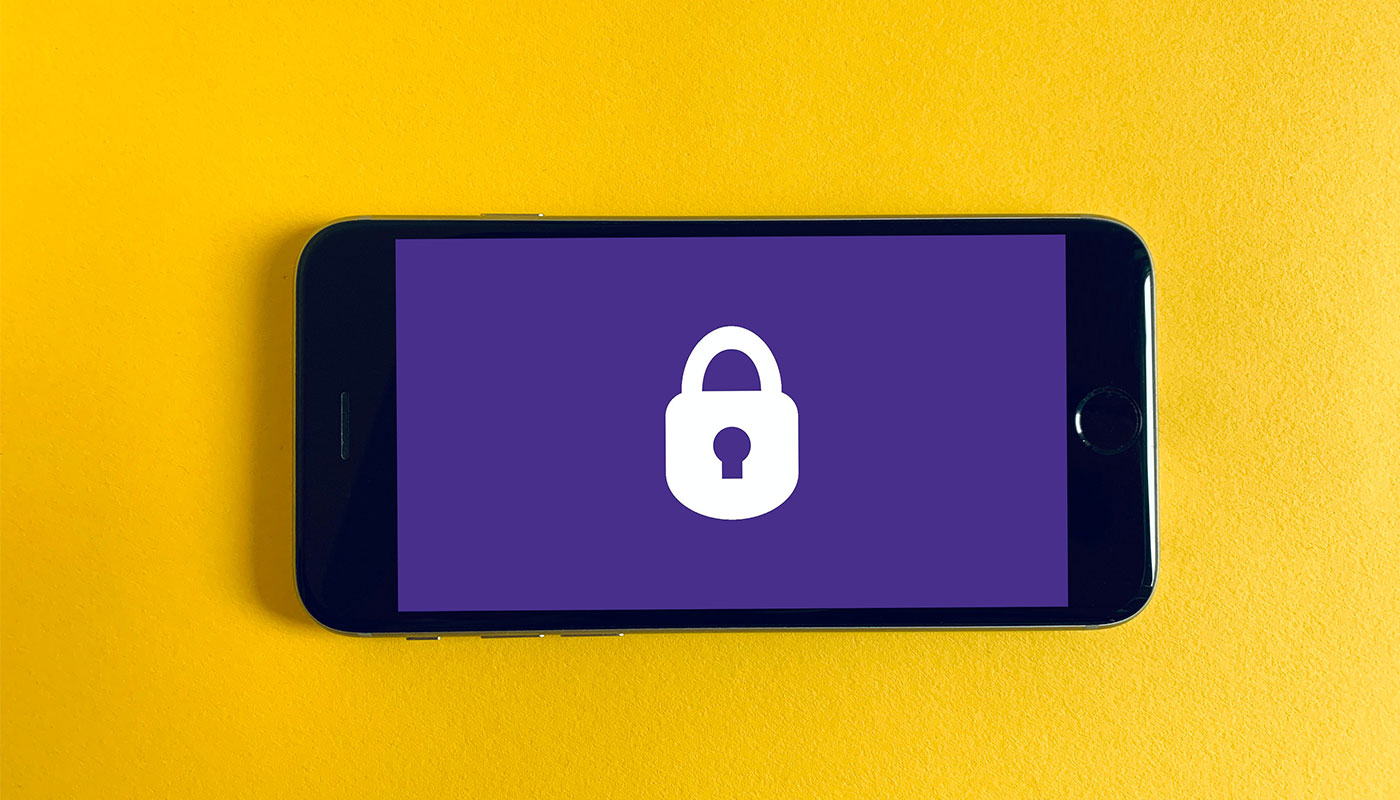The Power of Geotargeting and Geofencing for Franchise Brands
Location-Based Marketing
If you’re in the business of franchise or multi-location marketing, you understand the importance of reaching people in specific geographies for delivering personalized ad experiences to the right people, in the right place, at the right time. As a bonus, geotargeting and geofencing allow you to be more efficient with your ad dollars, only spending it in the locations where your ideal customer physically is.
Local marketing is all about driving local sales, orders and in-store visits, so taking your prospects’ locations into account when you advertise to them is a strategic imperative because you’re able to advertise to people who have shown real-world intent.
As a franchise marketer, you’re probably already using location as a targeting parameter in your campaigns, but are you getting the most out of it?
Geotargeting Vs. Geofencing
 Geotargeting
Geotargeting
Geotargeting considers a user’s location history and zeroes in on areas such as countries, states, DMAs, cities, zip codes or radii around a physical location. With geotargeting, you will usually layer on other types of audience targeting like demographic, behavioral and interest. You can get as granular as a 1-mile radius around a physical location with geotargeting, but it’s better to go wider to capture a large enough audience, especially if you’re layering on other types of targeting.
Geotargeting is based on a variety of signals – IP address, user settings, WiFi triangulation technology, browser cookies, and location opt-in data provided by users. As such, it captures people who either live in specific areas or who have recently visited specific areas. Most ad platforms provide the option of targeting only those who live in a geotargeted area if you want to avoid temporary visitors or are a home service-based business who needs to target people by their home address.
As part of your targeting strategy, you can include specific geo locations and exclude others, to get very specific about where your ads will show. This is useful if your targeted areas contain zones or regions that you don’t want to target.
Geotargeting Use Case
You own an eyelash studio franchise and want to run Google Search and Facebook/Instagram ads to your target audience. Your data tells you that your clients are willing to travel up to 20 miles to visit your studio, so you geotarget your ad campaigns to a 20-mile radius around your studio address and layer on interest and demographic targeting (E.g., Females aged 18-60 interested in beauty/eyelash products). If you know that your clients fall within a higher household income bracket, you could exclude the less affluent zip codes within the targeting radius.
Geofencing
Geofencing is hyper-local, mobile advertising and is used in real-time scenarios. With geofencing we can detect a person’s geographic location at a given time using their mobile phone data and then serve them ads if they enter that specific location and after they leave it. With geofencing, you create a virtual fence or perimeter around a location and serve programmatic ads to people who enter this area.
Other than serving ads to the people who enter the area, you can also send app or text notifications to them if they have downloaded your app and given you permission to contact them. This would be more of a retention strategy rather than an acquisition strategy.
You can also build new custom audiences by geofencing frequently visited places that indicate high-intent and using the resulting audiences in targeted customer acquisition campaigns on channels like social, display, CTV and digital audio. This method of building custom audiences is especially attractive as we see third-party data targeting becoming less effective with the deprecation of the third-party cookie. Additionally, these audiences are highly localized and highly relevant due to recency and intent signals.
The vast majority of geofencing marketing is powered by opted-in GPS data received from mobile phones. Cellular data and WiFi data is also used. In environments like urban areas, where cell towers and Wi-Fi routers are everywhere, geofences can be accurate to 100 to 200 meters. Geofencing provides the best accuracy when users have Wi-Fi turned on and GPS services enabled on the mobile device. It is great for targeting things like events (convention centers, arenas, etc.) and competitors’ establishments.
Event Targeting Use Case
You want to attract prospective franchisees and are ramping up your franchise development program. You run geofencing campaigns at big franchise conferences such as IFA or local franchise expos. You target in and around the convention center, the hotels where event attendees are staying, and the airport into which they are flying, during the date range of the conference. You then continue to target them for a set period after the event with personalized, relevant messaging.
Geo-conquesting Use Case
You are a fast casual Italian restaurant franchise and decide to geofence other Italian and fast casual restaurants around your location, serving ads to people who enter them with your special limited time offer. You create a conversion zone around your restaurant so that you can track the customers of your competitors who viewed or clicked your ad and then subsequently visited your restaurant to redeem your offer.
Custom Audience Building Use Case
Your target demographic is people who value low prices, convenience and selection in Tampa, Florida. You set up a geofence around discount and bulk grocery stores in the area such as Aldi and Costco, Target and Walmart, as well as fast food chains and dollar stores. You start collecting audience data and are then able to activate a display campaign targeting these prospects.
The Importance of Personalization in Location-Based Marketing
If you’re targeting people locally, it makes total sense to make sure your creative and messaging speaks to the local factor!
- Mention the region, city or even physical address of your business in the copy
- Use references to local attributes to personalize the ad and make the prospect feel the message was made especially for them
- Local sports teams, local events and landmarks and local weather are all ways you can incorporate that local flair into the messaging
- Feature the store manager or staff members in the ad to show friendly faces and names allowing your prospects feel to connected with your local brand
- Include special local or regional offers
Location-Based Marketing & Privacy

How will location targeting be affected as privacy becomes more regulated? Browser cookies are going away soon, and IP addresses are considered Personally Identifiable Information (PII), so does this mean geotargeting won’t be possible as we move into a more privacy-regulated world?
The answer is, with third party cookie deprecation, increased privacy regulations, and as browsers start to mask IP addresses, determining people’s physical location will become more challenging.
However, there’s a lot of work being done to develop privacy-compliant ways to geotarget users without invading their PII. Solutions will become a lot clearer as time goes on and frameworks become standardized. GPS data is the gold standard for location signals because it is the most privacy-compliant (aggregated and anonymized) and has the most accuracy. Geofencing lends itself to this!
Location-based marketing isn’t going anywhere and will remain a staple part of the franchise and multi-location marketing arsenal, so it really makes sense to take a strategic approach to using location as a key parameter in your marketing efforts!
Sources
https://www.adexchanger.com/privacy/your-quick-and-dirty-guide-to-ip-address-targeting-after-apples-declaration-of-war/
https://blog.admixer.com/geofencing-vs-geo-targeting/
https://basis.net/blog/blogblogprogrammatic-101-mobile-geotargeting
Stay In Touch.
Subscribe to our monthly email newsletter.
